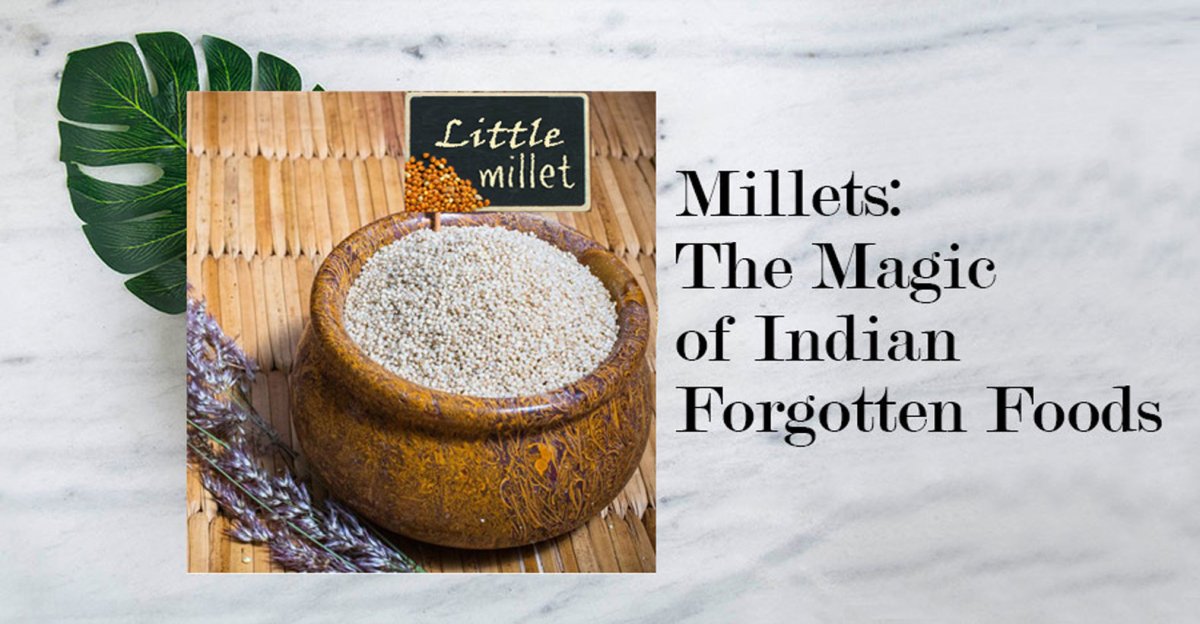Little Millet – Everything you Should Know
Little Millet is a traditional crop in India which is widely famous among people who are health conscious as these tiny grains are packed with a great number of nutritious substances. Little Millets are gluten-free, non-acid-forming, and a perfect addition to the diet of people who do yoga, workouts, cardio, etc. Moreover, its high nutritional value makes it a must-eat in a balanced diet. However, we should never eat an excess of something just because it is good because excess little millet usage in diet can lead to various side effects.

Why should you eat Little Millets?
Little Millets are a whole grain option that is low in carbohydrates and helps in improving glucose metabolism. Glucose in our body can be regulated as the little millet usage slowly releases sugar in our bloodstream, minimizing the absorption of glucose. Thanks to the presence of dietary fiber and resistant starch, little millets also exhibit properties like hypoglycemic as well as hypolipidemic effects.
Nutritional Composition
Given below is a detailed mapping of the nutritional value of 100g serving of millets:
|
Protein |
9.7 g |
|
Carbohydrates |
60.9 g |
|
Fat |
5.2 g |
|
Iron |
9.3 mg |
|
Phosphorus |
220 mg |
|
Calcium |
17 mg |
|
Magnesium |
114mg |
|
Energy |
329 kcal |
|
Crude Fibre |
7.6 g |
|
Ash |
5.4 g |
|
Thiamin |
0.30 mg |
|
Riboflavin |
0.09 mg |
|
Niacin |
3.2 mg |
Health Benefits of Little Millets:
Little millet benefits in nourishing our body and boosting our immunity. These are also rich in antioxidants like phenolic compounds, flavonoids, tannins, and polyphenols, which helps in keeping human bodies safe from ailments like cardiovascular diseases, cataracts, cancers etc.
Recent studies undertaken by Proceedings of the Nutrition Society, 2017, have found out that unprocessed millet grains are richer in nutritious value than millet flours or millet flakes. Moreover, being suitable for all age groups, little millet usage can be incorporated in baby foods, snacks, processed food items, etc.

The high inclusion of dietary fibers in these little wonders also makes us feel full with a little portion. In this way, our frequency of eating can also be regulated. The regulation of glucose absorption leads to the prevention of diabetes. The presence of magnesium makes it an impenetrable shield against heart diseases; niacin lowers cholesterol, and phosphorus helps in metabolizing fats and facilitates the production of energy.
Tips for Cooking Little Millets:
Before we talk about cooking, let’s talk about storing the grains. Store millet grains in airtight containers to store them for up to 6 months. You can increase the longevity of these grains by keeping them in a freezer.
A few cooking tips to prepare meals using Little Millets are:
- As Little millets are tiny in size, they can be easily mashed by softening them down by adding boiled water.
- You can even pop the millets to have it eaten like popcorns.
- Loose the starch to avoid stickiness while cooking by soaking them in couple cups of water beforehand
- Cook millets in containers with a lid to minimize the use of gas or electricity
- To enhance the nutty flavor of the grain, toast it in a skillet before adding water/stock.
- You can use millets to thicken soups too.
Regional Names of Little Millets:
Millets go by different names in different regions. Such as little millet in Hindi is called Kutki; in Marathi, it is called Sava; Gajro in Gujarati; little millet in Tamil goes by the name of samai, and little millet in Telugu is called samalu. These tiny grains are not only popular in India but the whole world. People widely use little millets in the USA for its nourishing and antioxidant properties. Here is a list of trivia of different names of Little millet:
|
Linguistic Category |
Name of Little Millets |
|
English |
Little Millet |
|
Hindi |
Kutki |
|
Bengali |
Kangani |
|
Marathi |
Sava |
|
Tamil |
Samai |
|
Telugu |
Samalu |
|
Gujarati |
Gajro |
|
Kannada |
Same |
|
Malayalam |
Chama |
|
Odia |
Suan |
|
Punjabi |
Swank |
|
Kashmiri |
Ganuhar |
Recipe of Little Millets:
You can find various recipes for cooking little millets online if you wish to experiment with these medicinal ingredients. From little kids to grandparents, everybody will love these nutrient-rich delicious foods for sure. Below is a little millets recipe to kickstart your day; follow the steps and cooking tips for a healthy yet tasty dish:
Little Millet in Curd:
- Wash the grains carefully.
- Boil water in a vessel and add it to the millets to make them soft
- In a mixing bowl, mash the already soft millets and add curd.
- Mix it well
- Now, in a separate pan, heat a teaspoon of oil and to it add seasoning of ½ teaspoon of mustard seeds, ½ teaspoon of urad dal, curry leaves, 1 finely chopped green chillies, and a tiny piece of ginger
- Temper the mixture
- Transfer the content of the pan to the millet rice and mix it well
- Add grated carrot, coriander and a dash of salt for taste
- Served chilled Curd Millet

Side Effects of Millets:
As every coin has two sides to be cared for, little millets also hold their own share of side effects of which you should have knowledge of:
- Excess consumption of millets or a millet-only diet can interfere with the function of thyroid glands.
- The high fiber content of millets delays digestion which can pose as a problem for people having intestinal diseases
- Excess consumption of amino acids are not good for health.
We hope that this article has removed your queries regarding little millet usage, cooking tips, nutritional values, and side effects. Now add this nutritious ingredient in your diet list and feel its magic!













